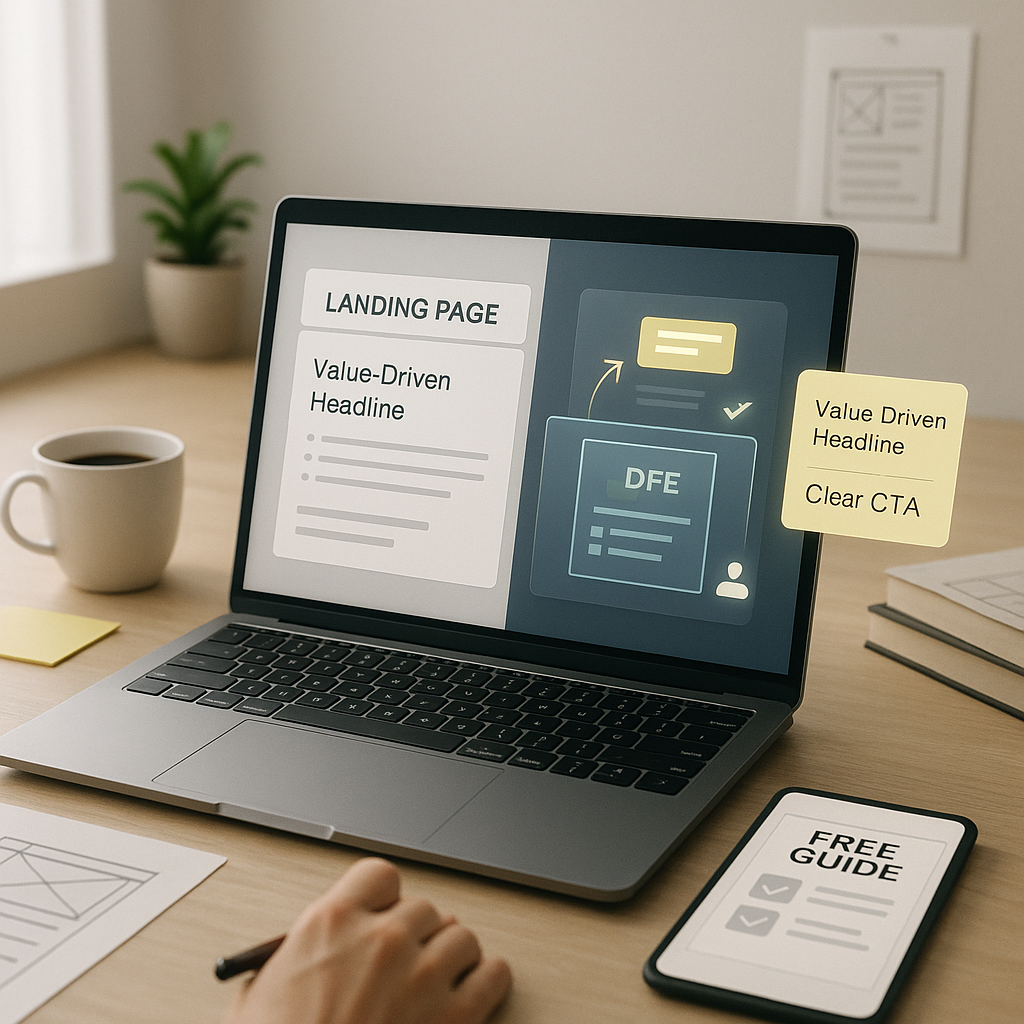Your cart is currently empty!

How do I write landing page copy for lead magnets?
•
What is a Lead Magnet Landing Page?
A lead magnet landing page is a focused web page designed to offer something valuable—like a free guide, checklist, or webinar—in exchange for a visitor’s contact information. It’s not just a page; it’s a handshake, a first impression, and a conversion opportunity rolled into one.
Imagine you’re a business coach offering a free PDF titled ’10 Habits of High-Performing Entrepreneurs.’ The landing page for that PDF isn’t just a place to host a form. It’s your pitch. Your moment to convince someone that what you’re offering is worth their email address—and their trust.
Why Copy Matters More Than Design (At First)
Design gets attention, but copy drives action. You can have the most beautiful landing page in the world, but if your words don’t resonate, your conversion rate will suffer. Great copy speaks directly to the reader’s needs, desires, and fears. It answers the unspoken question: ‘What’s in it for me?’
Think of your copy as a conversation. You’re not shouting at your visitor—you’re guiding them gently toward a decision that feels like their own.
How to Structure Your Landing Page Copy
Effective landing page copy follows a clear structure. Here’s a proven framework:
- Headline: Grabs attention and communicates the core benefit.
- Subheadline: Supports the headline with a secondary promise or clarification.
- Body copy: Explains the value of the lead magnet, who it’s for, and what they’ll gain.
- Social proof: Testimonials, stats, or logos that build trust.
- Call to action (CTA): A clear, compelling prompt to download or sign up.
Let’s break these down further.
Strong Headlines: Your First Conversion Point
Your headline is the first thing visitors see—and often the only thing they read before deciding to stay or bounce. It should be benefit-driven, specific, and emotionally resonant.
Compare these two headlines:
- Download Our Free Guide
- Steal the 7-Step Framework Top Freelancers Use to Land High-Paying Clients
The second one wins. Why? It’s specific, implies value, and speaks to a clear outcome. Use power words like ‘free,’ ‘proven,’ ‘secret,’ or ‘step-by-step’ to add urgency and clarity.
Writing Persuasive Body Copy That Builds Trust
Once your headline hooks them, your body copy needs to do the heavy lifting. This is where you explain what the lead magnet is, why it matters, and how it helps.
Use short paragraphs, bullet points, and plain language. Avoid jargon. Focus on outcomes, not features. For example:
- Don’t say: ‘Our guide includes 10 pages of productivity tips.’
- Do say: ‘You’ll discover how to reclaim 5+ hours a week using simple, proven habits.’
Speak directly to the reader using ‘you’ and ‘your.’ Make it feel personal. If you’re targeting overwhelmed solopreneurs, say so. If your lead magnet is for busy parents, reflect that in your tone and examples.
The Power of Social Proof and Microcopy
People trust people. Adding testimonials, user counts, or recognizable brand logos can significantly improve conversions. Even a simple line like ‘Join 3,000+ marketers who’ve downloaded this checklist’ adds credibility.
Don’t overlook microcopy—the small bits of text near your form. For example:
- ‘No spam. Unsubscribe anytime.’
- ‘Takes less than 30 seconds.’
- ‘100% free – no credit card required.’
These tiny reassurances reduce friction and address objections before they arise.
Call-to-Action Tips That Actually Work
Your CTA is the tipping point. It should be clear, action-oriented, and benefit-driven. Avoid generic buttons like ‘Submit’ or ‘Click Here.’
Instead, try:
- ‘Send Me the Free Guide’
- ‘Get Instant Access’
- ‘Show Me the Checklist’
Test different CTA placements—above the fold, after testimonials, or at the bottom of the page. Sometimes repeating your CTA in multiple spots can boost conversions.
Common Mistakes to Avoid in Lead Magnet Pages
Even well-intentioned marketers fall into these traps:
- Too much text: Keep it concise. Your visitor is scanning, not reading a novel.
- Unclear value: If the benefit isn’t obvious in 5 seconds, you’ve lost them.
- No visual hierarchy: Use bold text, spacing, and layout to guide the eye.
- Asking for too much info: Stick to name and email unless you have a compelling reason to ask for more.
Remember, the goal isn’t to impress—it’s to convert.
Real-World Example: The Consultant’s Checklist
Let’s say you’re a B2B consultant offering a lead magnet called ‘The 5-Step Checklist for Streamlining Client Onboarding.’
Your landing page might include:
- Headline: ‘Onboard New Clients in Half the Time – Without Dropping the Ball’
- Subheadline: ‘Grab the exact checklist I use to streamline every new client relationship.’
- Body: Bullet points showing what’s inside: email templates, task list, automation tips.
- Testimonial: ‘This checklist saved me hours and made me look super professional.’ – Sarah, Freelance Designer
- CTA: ‘Send Me the Checklist’
Simple. Focused. Effective.
Bonus Tip: Match the Message to the Traffic Source
If your landing page is being promoted via Facebook Ads, the tone and copy should reflect that casual, conversational vibe. If it’s from a LinkedIn post, a more professional tone may work better. Always align your landing page copy with the expectations set by the traffic source.
Conclusion
Writing landing page copy for lead magnets isn’t about being clever—it’s about being clear, helpful, and human. Focus on the reader’s needs. Show them what they’ll gain. Build trust with every word. And always, always make it easy to say yes.
Next time you sit down to write a landing page, ask yourself: If I were my ideal customer, would this make me want to click?
Powered by: aiContent.live
Leave a Reply